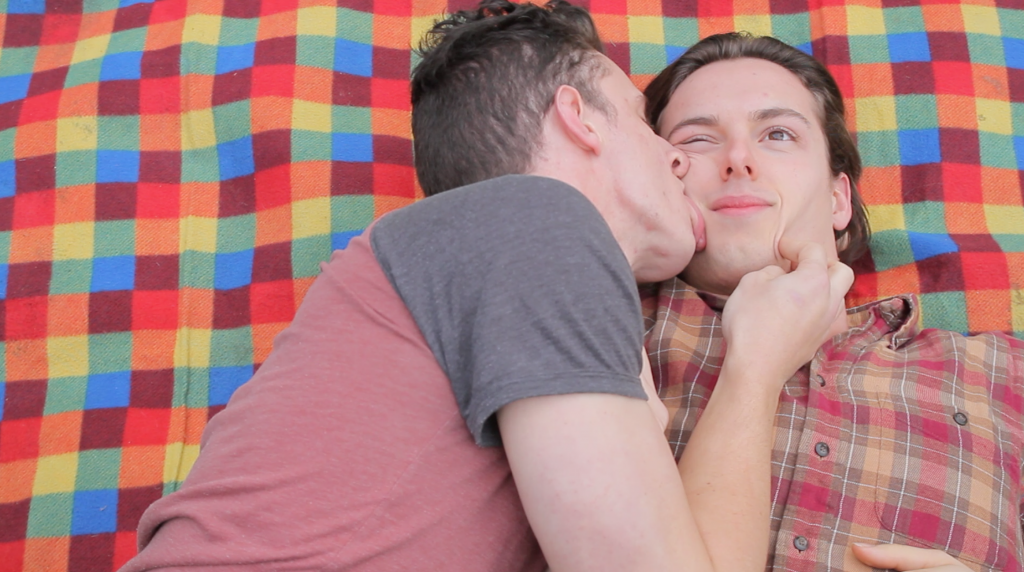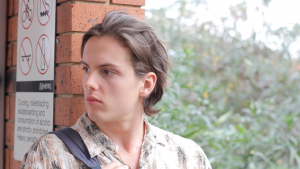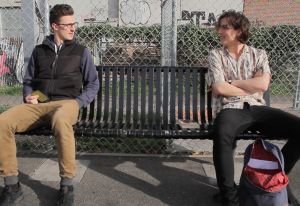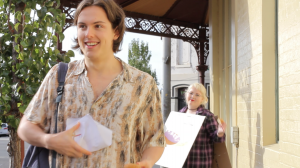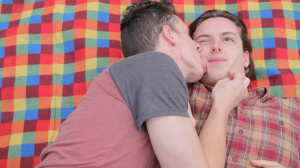Shortly after commencing the RMIT Media Studio ‘Ways of Making’ I wrote a blog post noting my initial aims for and expectations of the course. It is interesting to look back at this piece now that I have finished the university semester, because I see how it may have shaped the way I went about completing the course work.
I chose ‘Ways of Making’ essentially because, out of all the other studios, I knew it would offer me the most freedom within the realm of filmmaking. Although I had no idea what I wanted to actually make in the studio, I just wanted to be able to have the option to do anything. In retrospect, it is very lucky that I did have this freedom as there is no way I would have been able to do the project I did in any other studio. Having had Paul Ritchard as a Studio Leader before also helped, because I knew that I would be learning about film industry practice, as well as improving my technical camera and audio skills. His guidance also ensured that the studio would be ‘hands-on’ and I would be able to do research-through-practice, which I would much rather do (and would learn a lot more from) in comparison to theoretical research.
The class time for the first half of the course was spent looking at various films and concentrating on technical skills. Originally I had written that I specifically wanted to practise using a dolly, because I had never used one before. I also wanted to learn more about colour grading and studying how to use lighting setups effectively. Thanks to Paul and Robin Plunkett, at least one three-hour class was dedicated to each of these practical skills. It was great to know that everyone in the class had a say in how the studio was run and that our questions and aspirations for the course would be taken on board. All of these classes definitely helped me in the second half of the semester when I was conducting my own shoots and editing the resulting footage. In fact, I employed all of these technical lessons into my final project: I used a dolly, I essentially had to light the shoot I was working on myself and I colour graded my own edits.
Which brings me to explaining what I actually did for the second half of semester. About five or six weeks into the course I was searching for something to create or to investigate, through making film. I work at a cinema that is infested with creative staff members: actors, filmmakers, writers, production designers, musicians etc. So initially I thought I would make the most of this and ask around to see if any of the writers had scripts I could use to create a scene or short film. The first one I asked had just started planning to direct his own short film and needed a cinematographer. Without even thinking that I could somehow mould this into a project for university, I agreed to be the Director of Photography. Luckily I spontaneously brought this project up in a meeting with Paul, of which he said: ‘go for it’; so I got to make the cinematography for the short film my investigation for the course. Although I am still not 100% sure it was the best thing I could have done this semester, (particularly because the class had been warned of the disadvantages of creating an entire short film), I would not have had the time to be involved with the production had I done a different investigation for this studio, and it ended up being one of the best experiences I’ve ever had. Therefore, I am still happy I shot the film, which came to be called Touch On/Touch Off.
Aside from shooting some video for my previous university and school projects, I had never considered myself as a Director of Photography and I was not confident that I could pull off shooting a whole film for someone else. So I decided that in preparation I would storyboard all of the scenes for the film and I would also do test shoots for a number of the scenes. This definitely helped when it came to the real shoot day. However, even though Max, the director, and I had shared our various ideas for shots, by sending each other storyboards and having face-to-face meetings, when it came to the real shoot day, I realised that it was him who was going to have the final say on how things would be shot. As always, the lack of time was a limitation of how ‘creative’ we could be, so we often found ourselves resorting to the traditional two shot, shot, reverse shot method. This is efficient, but as a cinematographer, rather boring to shoot. Maybe this would not have been a problem had I decided to work on a project individually; but in reality that isn’t how the film industry works. Although filmmaking may not be totally ‘collaborative’, per se, it is almost impossible to create a film completely on your own. Ultimately, the film would have been far less interesting without the amalgamation of various ideas from the cast and crew who were all amazing. I specifically enjoyed working with the production designers and I realised how much more beautiful shots can be with good props, costuming and makeup. The production designers made my job a lot easier because they positioned the props in specific ways so that there would be a balanced composition within the frame. They also made the images really ‘pop’ with the use of garish colours, that suited the feel of the film. It has been really fun to grade the footage because of this, although difficult to not go crazy and saturate the colours to make them stand out even more.
Even though I do not explicitly say this anywhere in my original posts for the semester, it is evident that what I really wanted to do was test myself: Could I make something that I was proud of? (Because I never really had before). Did I really want to be an editor? (I had come into my degree believing that all I would ever want to do was edit film and thus I spent the majority of my time devoted to editing in my first two years as a Media student and as an intern). Could I potentially be a cinematographer? Do I have the skills to do it? Could I make something full form? (Because I hadn’t ever made something longer than a scene in my degree before).
Overall, I’m not sure I would say I am proud of what I’ve created. I’m proud of how much work I put into it and I definitely like parts of the film, for instance the chaotic pan/dolly shots and the closeups that I took with my favourite 50mm lens. But I still have so much more to do before I can say my final edit is ready and that I am happy with it. I’ve only gotten through about a third of the film, because it’s taken a lot longer to edit than I thought it would (I was hoping to have the whole film edited by now). Nevertheless, I would rather do a good job than a quick job, so I will just have to keep myself motivated and keep editing throughout the holidays, because I want the film to be something I can show future employers. The creation of Touch On/Touch Off was incredibly rewarding because I learnt a lot about the making of a short film and I also had the time of my life shooting it. For this reason, I am seriously considering moving my concentration away from editing and onto cinematography in the future.
